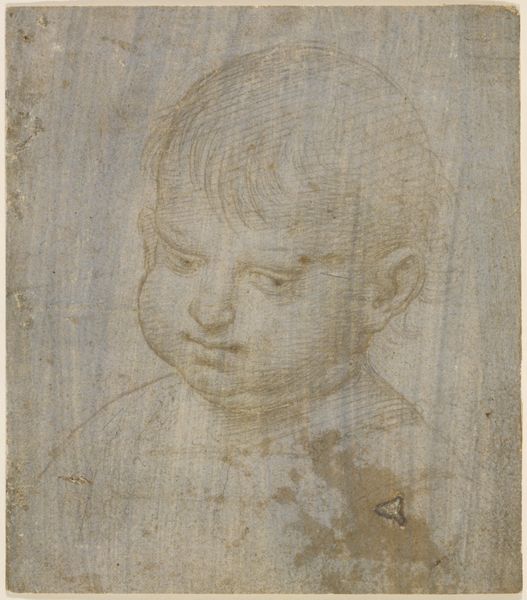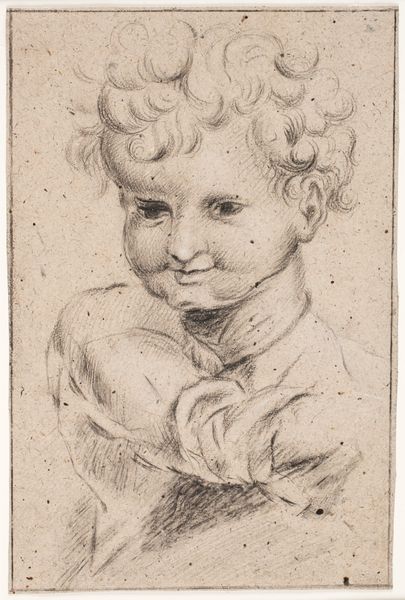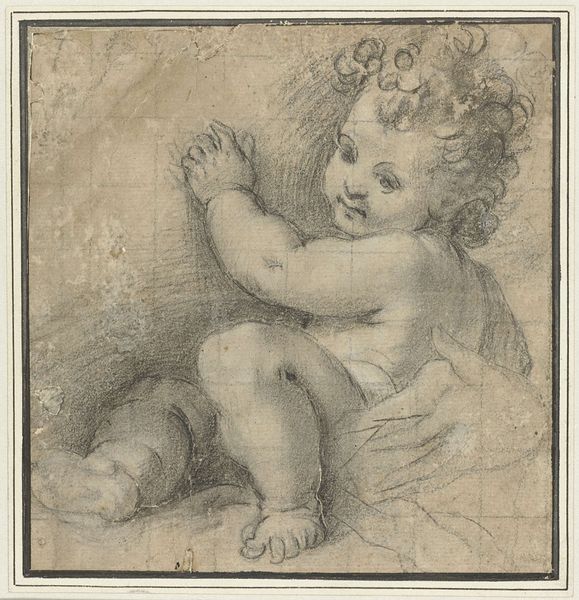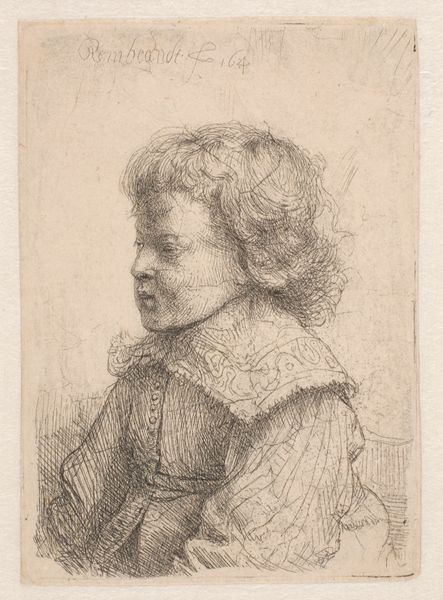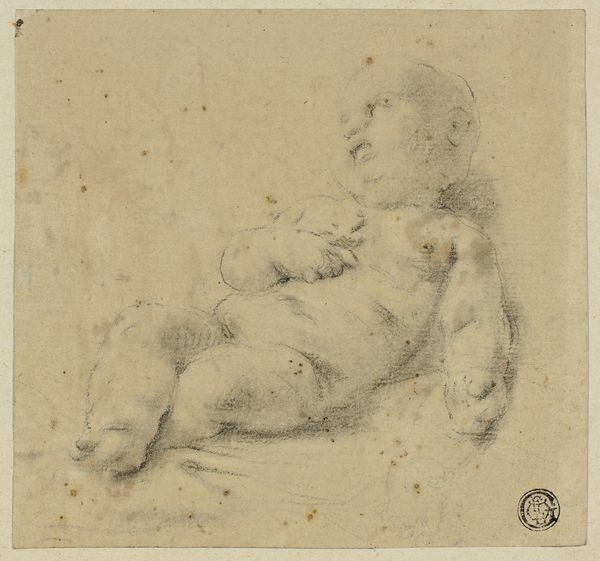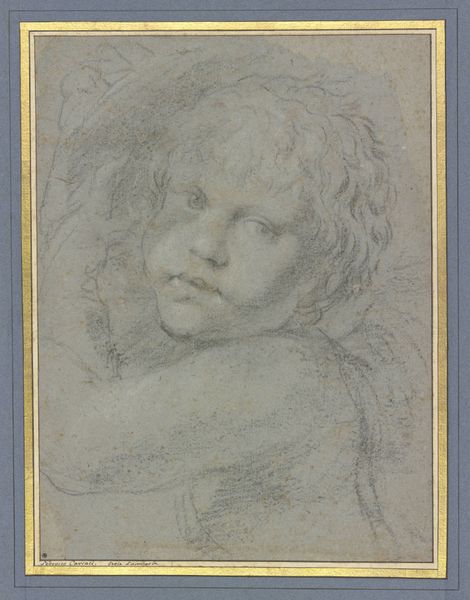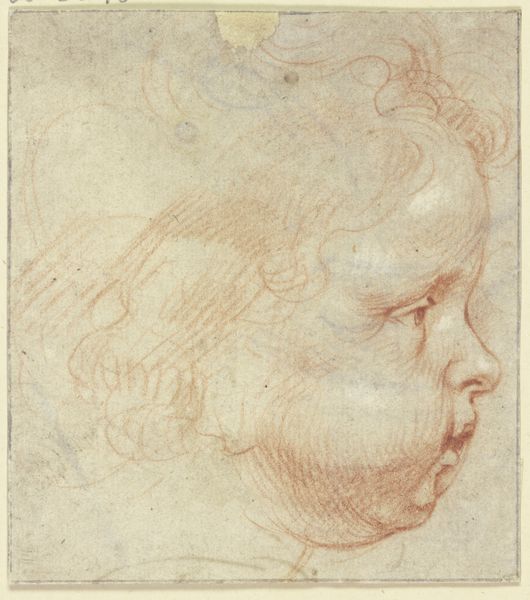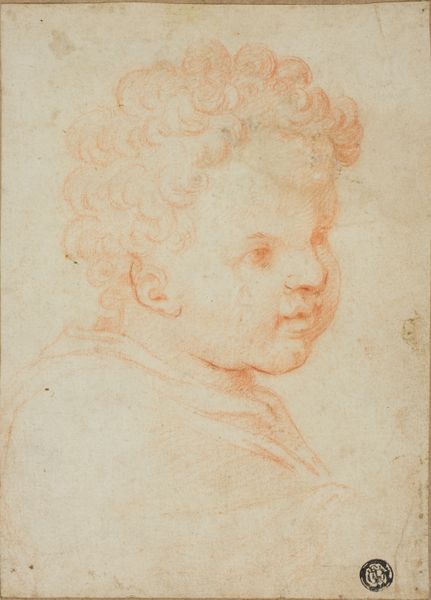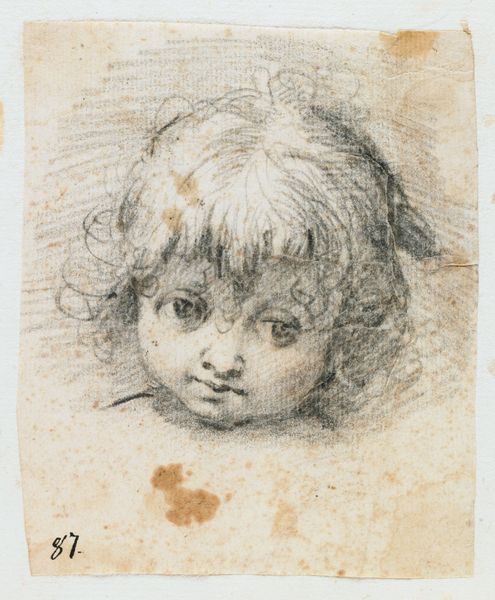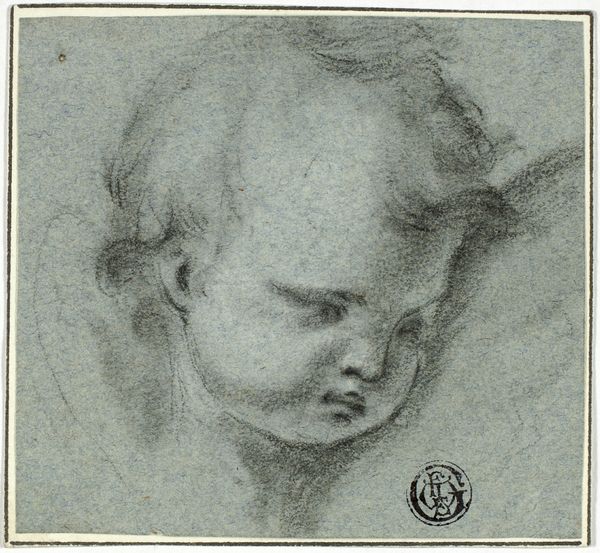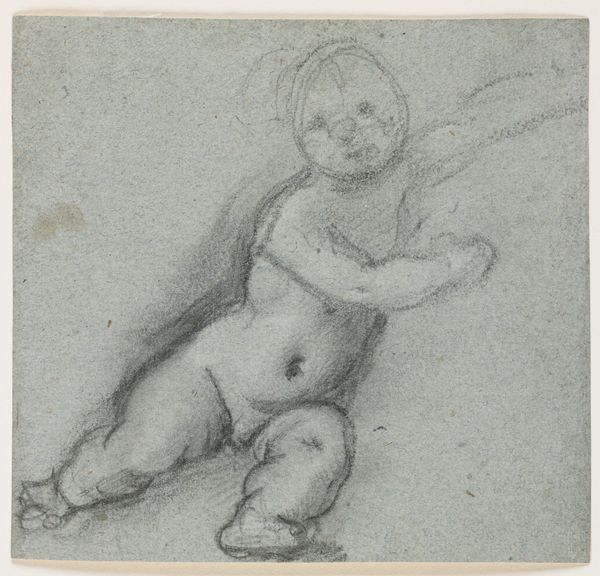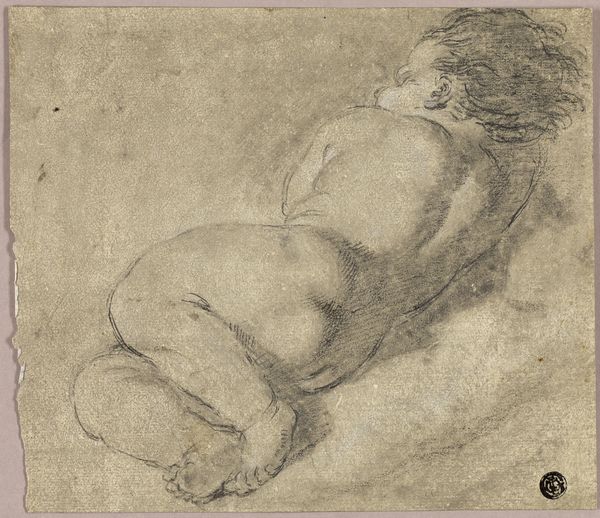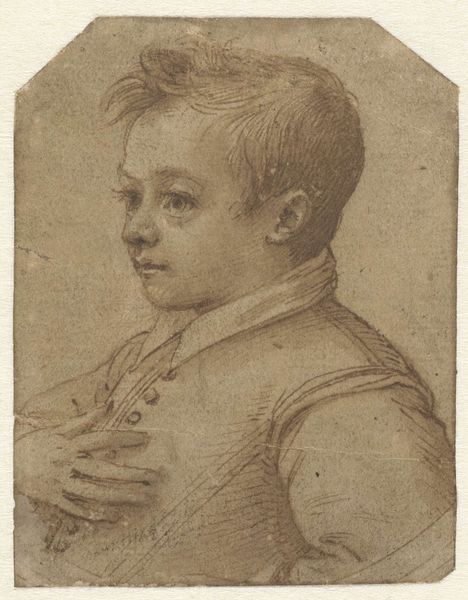
drawing, paper, chalk, charcoal
#
portrait
#
pencil drawn
#
drawing
#
charcoal drawing
#
figuration
#
paper
#
11_renaissance
#
pencil drawing
#
chalk
#
portrait drawing
#
charcoal
#
italian-renaissance
Dimensions: 95 × 84 mm
Copyright: Public Domain
Curator: I see a chubby little cherub gazing heavenward, rendered with incredible softness. What do you think? Editor: Well, I’m immediately struck by the surface of the paper itself. You can almost feel the grain, and how that interacts with the charcoal or chalk…it’s tactile, almost sculptural. Curator: It is quite tenderly rendered. This drawing, "Putto's Upturned Face", is from the Renaissance, and its creator remains anonymous. I am fascinated by the contrast between the softness of the chubby cheeks and the almost harsh texture of the charcoal. It lends an interesting dimension to the cherubic innocence we associate with putti. Editor: Absolutely, it disrupts the saccharine sweetness we might expect. And I'm intrigued by the deliberate use of materials. Think about where this paper comes from, how it’s processed, how that texture would affect the artist’s ability to control the medium. The act of making the drawing seems particularly…laborious. Curator: I see your point. The artist’s hand is quite present, even visceral. And yet, there is also a feeling of divine inspiration, a seeking out of higher things. You know, in the Renaissance, putti were not merely decorative; they symbolized divine love and messengers between the celestial and earthly realms. Perhaps this gaze captures that yearning, that connection. Editor: Perhaps. Or perhaps it's about the economics of Renaissance workshops. These drawings were often exercises, practice for more 'important' works. How many similar sketches must exist? Who sourced the charcoal? Who prepared the paper? There's a whole network of labor implicit in what appears as a simple drawing. Curator: It's certainly true that many hands would be involved in the production of materials, not to mention studio assistants. I suppose it’s a dialogue between heaven and earth then—inspiration mediated by commerce and craft. Editor: Indeed. Each choice, from the type of charcoal to the angle of the putto’s gaze, is connected to the cultural and economic systems of its time. The means of production is part of the artwork. Curator: I love that—considering it a dialogue and a result from material realities—makes this image of upward gaze all the richer. Editor: Exactly. Seeing the world with upturned gaze is enabled through materiality.
Comments
No comments
Be the first to comment and join the conversation on the ultimate creative platform.
